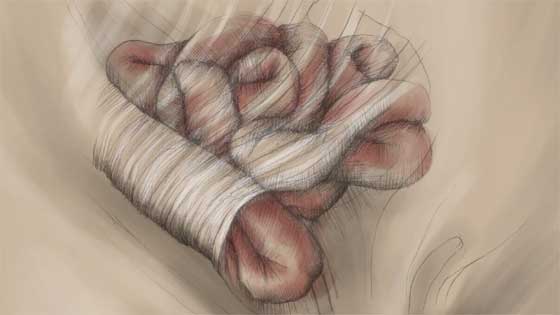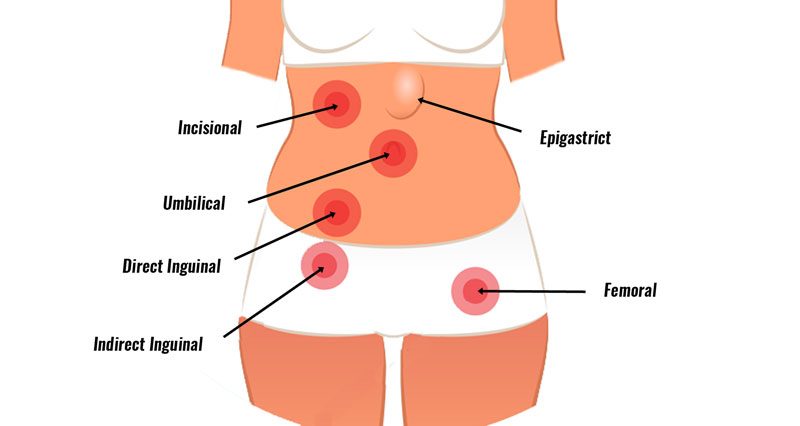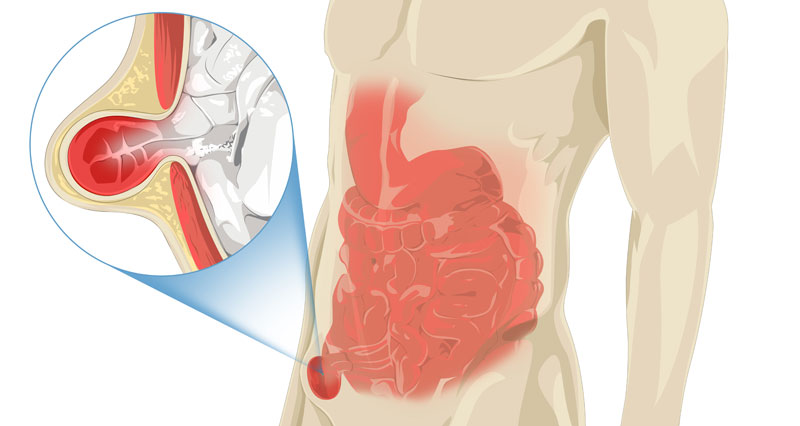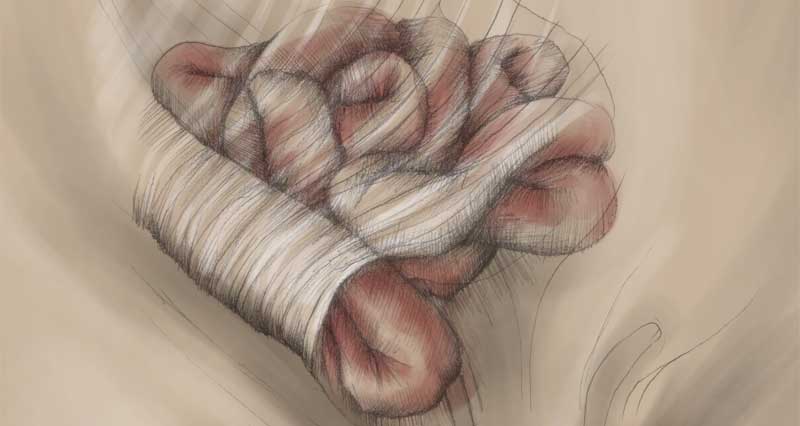A hernia occurs when an internal part of the body (such as the intestine), pushes through a weakness in the overlying muscle wall, resulting in a soft lump. Here we explain the symptoms, causes and types of Hernia.
Hernia symptoms
Symptoms include:
- Sudden pain when straining or lifting, often eases after the initial period of pain or discomfort.
- A soft lump can often be felt in the lower abdomen or groin area depending on which type.
- The lump may come and go as the internal part moves in and out of the gap in the muscle wall.
- Sometimes the lump will completely disappear when lying down or grow bigger when coughing or sneezing, which may also trigger pain.
- There are several types of a hernia that are classified based on location with the two most common types being an inguinal hernia and a femoral hernia.
Types of hernia
The different types of hernia are:
Inguinal

An inguinal hernia occurs when part of the internal tissue protrudes through a weakness in the overlying abdominal wall. This can be fat, muscle, or intestine resulting in pain, discomfort, and other complications.
- Symptoms include pain in the groin during exercise when coughing or sneezing.
- You may have visible swelling or lump in the going area.
- More on Inguinal hernia
Femoral

A Femoral hernia is the next most common form and occurs a little lower down into the top of the leg. They are more common in women than men and are usually smaller than Inguinal ones.
- More on Femoral hernia
Umbilical
Umbilical occurs near the belly button. These are often present from birth. If necessary they will be repaired in childhood.
Incisional
Incisional occurs when the tissue pushes through an old wound or a scar. They are most common when the scar hasn’t healed well or has had an infection. This will usually occur within two years of the initial injury.
Hiatus
Hiatus hernias occur when part of the intestines push upwards from the abdomen into the chest cavity through a hole in the diaphragm.
What causes a hernia?
Consultant Surgeon Mr David Lloyd explains what a hernia is:
Hernias are more common in men than women, with 1 in 4 men suffering a hernia at some point in their life, compared to only 3 women in every 100!
They often develop due to a sudden strain or force, often lifting something heavy for example. But this is not always the case. They may also appear for no apparent reason.
Other risk factors include:
- Age – The older you are the higher your risk.
- Weight – Overweight and obese people are more likely to suffer.
- Long-term coughing – Coughing places a strain on the abdominal wall.
- Long-term constipation.
Hernia treatment
Whilst the treatment of most is not urgent, it is usually recommended to have a hernia surgically repaired. This is because it will more than likely just get bigger and more uncomfortable.
Also, there is always a risk of complications such as strangulation if it is not repaired.
The operation is fairly routine and takes only an hour or so to perform. In most cases, you can go home the next day and return to work in around a week.
The procedure usually involves using a piece of mesh to repair to the hole in the abdominal wall.
Strangulated hernia
Generally, Hernias are more of an annoyance than a danger, but it is important to get them checked out. This is because, in a few cases, it becomes ‘strangulated’.
Part of the intestine poking through the hole in the muscle wall becomes constricted. This results in the blood supply to those tissues being cut off.
Eventually, this may lead to the death of the tissues which becomes a medical emergency. In a few other cases, it can result in an obstruction in the bowel, which again requires urgent medical attention.
References & further reading
- Fitzgibbons RJ, Forse RA. Clinical practice. Groin hernias in adults. N Engl J Med 2015;372:756–63.



